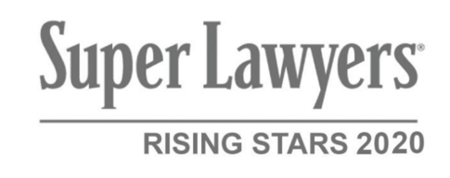What Are Common Causes of Scaffolding Accidents?
Published in Personal Injury on January 20, 2020
Reading Time: 3 minutes
Working in construction comes with many risks. Construction zones have dangerous equipment, tools and materials that can cause significant personal injuries. In 2018, 1,008 construction workers lost their lives on the job. This was more than one-fifth (21.1%) of total worker fatalities in the U.S. that year. It is up to every worker and site manager to maintain a reasonably safe work environment, including safe scaffolds. Unfortunately, this is not always the case. Each year, scaffolding accidents cause serious and fatal construction worker injuries around the U.S.
Ignored Federal Regulations and Poor Scaffold Construction
The Occupational Safety and Health Administration (OSHA) has strict regulations in place for the construction of scaffolding. OSHA Standard 1926.451 lists the general requirements for putting together scaffolds. It states that each scaffold must be able to support its own weight and, at a minimum, four times the maximum intended load without failing. It also states that a qualified person must design, construct and load the scaffold. OSHA has dozens of rules for each phase of scaffolding construction, all in place for the safety of workers.
A worker may violate OSHA regulations, skip steps or rush through construction to save time on a build. If a construction worker or company cuts corners when building scaffolds, however, it could lead to serious accidents. Negligence or carelessness while constructing a scaffold could make the support structure or platform unsafe for use. The scaffold may fall apart or collapse with workers on it or working beneath. A scaffold collapse could be deadly for all involved. Obeying federal regulations, including having a qualified worker handle construction, can help prevent scaffold disasters.
Old Scaffolds
Scaffolds are temporary structures. They should not be in use permanently at a construction site. Scaffolds that have been in place too long, especially in bad weather, could suffer structural damage that compromises their safety. Scaffold boards could develop damage or defects over time that weaken the overall structure, such as insect infestations, fungal decay, wood rot, water damage, board distortion, cracks or splits. Continued use of an old or defective scaffold could lead to a structural collapse or missing boards. Workers should inspect scaffold boards regularly for signs of damage or issues, and remedy them before accidents occur.
Overloaded Platforms
Many scaffold accidents occur from overloaded structures that cannot bear the weight. Workers have a duty to know and obey the maximum load limits of a scaffold. They must carefully calculate the weight of the tools, materials and/or workers that will be on the scaffold before climbing up. Then, they must adjust the load based on the scaffold’s maximum, never going over the amount the scaffold can safely handle. Trying to save time by overloading a platform could lead to a deadly collapse.
Collisions With Scaffolding
Some scaffolding accidents stem from vehicles or equipment colliding with the structural support beams on the ground. A distracted or negligent operator may drive directly into scaffolding or strike it with a piece of the equipment enough to push the support beams over, leading to scaffold collapse. Equipment-related accidents can lead to serious worker falls and related injuries, as well as injuries from pieces of the scaffold striking workers below. Injuries can include bone fractures, spinal cord injuries, traumatic brain injuries, crush injuries, internal organ damage, lacerations, and wrongful death.
Negligent Construction Site Managers
It is a site manager’s duty to maintain a reasonably safe construction zone. If the manager fails to properly train workers, inspect the site, repair noticeable hazards and respond to complaints from workers, it could lead to a catastrophic scaffolding accident. After any scaffolding accident, victims should consult with attorneys about potential liability for their damages. The construction company could be vicariously liable for the mistakes of its managers and supervisors. Holding the right party liable could lead to fair compensation for the injured worker or loved ones. Talk to a Boston scaffolding accident lawyer for more information about a case.
For more information, call our law office at (617)-391-9001. Or if you would prefer to email us, then please visit our contact page.
Comments are closed.










